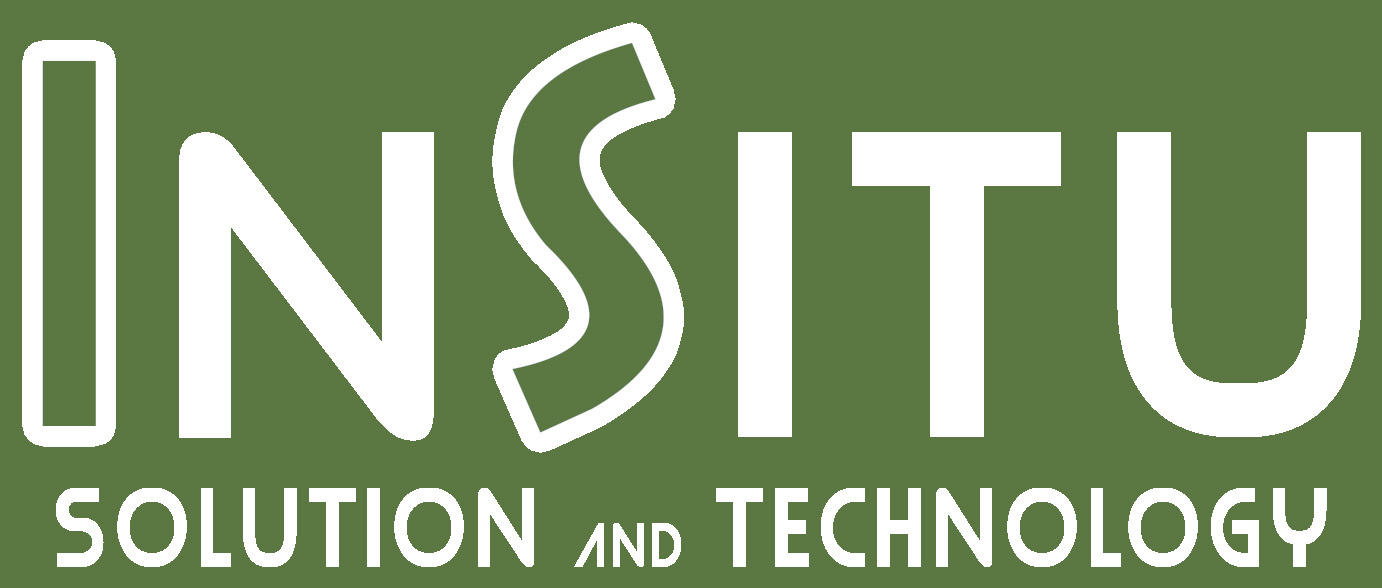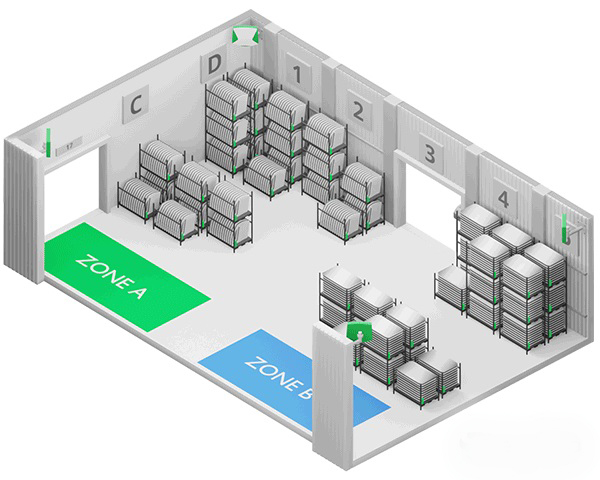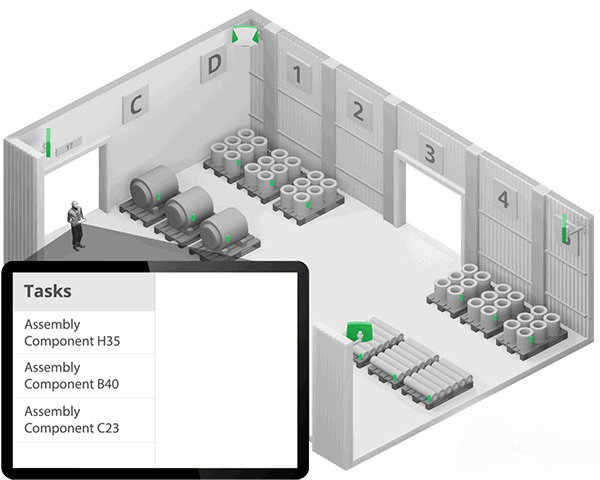Asset Tracking and Material Flow Analysis in Real-time
Real-time asset tracking is the process of tracking a physical asset in a facility to define its location. An asset can also be materials or products that are being tracked to monitor their flow throughout the production process. The goal of tracking assets is to maximize asset utilization, prevent asset misuse and optimize their role in all processes.
How Does Real-Time Indoor Asset Tracking Work?
Each asset that needs to be tracked is equipped with a localization tag that transmits a signal to anchors attached to the ceilings. Often the tags are not attached to a product or material but to the pallet holding it. The anchors at the ceilings then send the signal received from the tag to the RTLS server to calculate the assets’ positions in real-time and with 30 cm accuracy. To discover more about how UWB-powered indoor positioning works, please visit our UWB RTLS page.

The Benefits of Real-time Asset Tracking
Full Real-time Visibility of Assets and Inventory
InSitu RTLS provides a full real-time visualization of every asset, tool and material across your entire facility. All tracked assets are visualized on your facility plan with one-foot (30 cm) accuracy and displayed in real-time on any device. Knowing exactly where assets are greatly reduces the time spent looking for missing or misplaced assets or all rejects from a single batch.
Having full insights into where assets were in the past and what their flow across the facility was helps to plan processes better, monitor inventory, reduce search times, limit bottlenecks and streamline workflows.
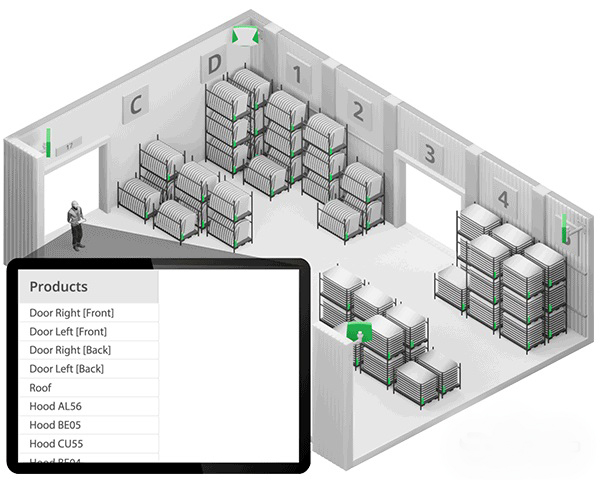
Real-Time Tool Tracking and Their
Configuration based On Location
By having real-time asset visibility, the operators and managers both know if the right tool with the right configuration and right occupancy status is at the right place. At the click of a mouse, staff can view the location and status of the tool with one-foot (30 cm) accuracy across the whole facility, eliminating the wasted time of a manual search.
Another use case represent the automatic configuration of the tightening torques at nutrunners based on the proximity of a particular car body and a particular nutrunner preventing the wrong tightness, which results in slowing down or stopping the assembly line, creating significant costs.
eKanban for Material Flow and Production
Planning and Monitoring
Using InSitu RTLS, paper Kanban cards can be replaced by digital eKanban cards that can hold the same information and feature a UWB tag for the precise real-time position of the card. Through the digitalization of the Kanban process, the lead time is shortened, fewer employees are needed to cover the operation, the inventory size is right-sized, the manual-entry errors are limited and the full real-time visibility of the processes is gained.
Read more about how eKanban for Material Flow Analysis enhances efficiency and productivity in industry.
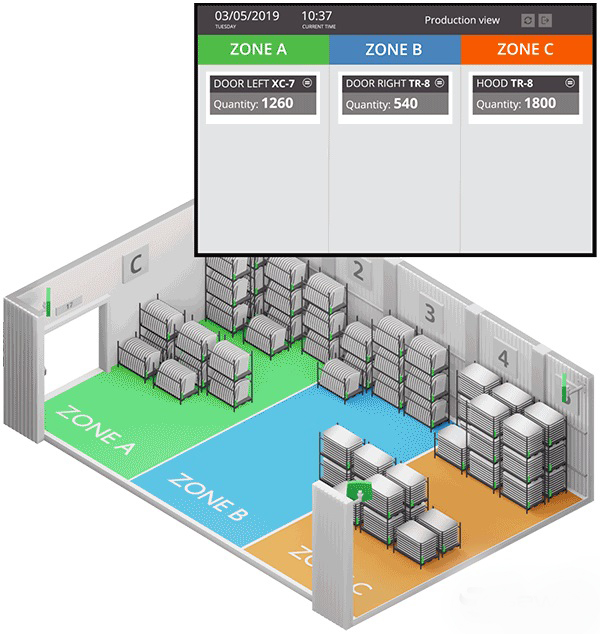
Indirect Asset Tracking via Tracking Handling
Vehicles
In scenarios where hundreds to thousands of assets (e.g., pallets) are being transported by vehicles such as forklifts, you can achieve a better project ROI by tracking a smaller number of forklifts rather than all the pallets that the forklifts are manipulating. The trick here is to identify the pallets with cameras and barcodes or NFC technology during the loading, pair that information with the forklift, and then simply only track that forklift to be aware of the location of the pallet.
By tracking forklifts, the full real-time visibility of the material’s location and its flow within the facility is achieved while keeping the costs of your indoor tracking project at a minimum.
Improving the Picking Process by Asset
Tracking
Knowing in real-time where your assets are, both in the horizontal and vertical space, improves the processes your workers use to find, pick and put the correct component in the right location. The audio system navigates workers to take the optimal route to the asset in the best picking order possible.
If a worker is about to pick an asset that is substitutable from multiple options, the system selects the one in closest proximity. As a result of this, the workers increase their picking rates and save time.
